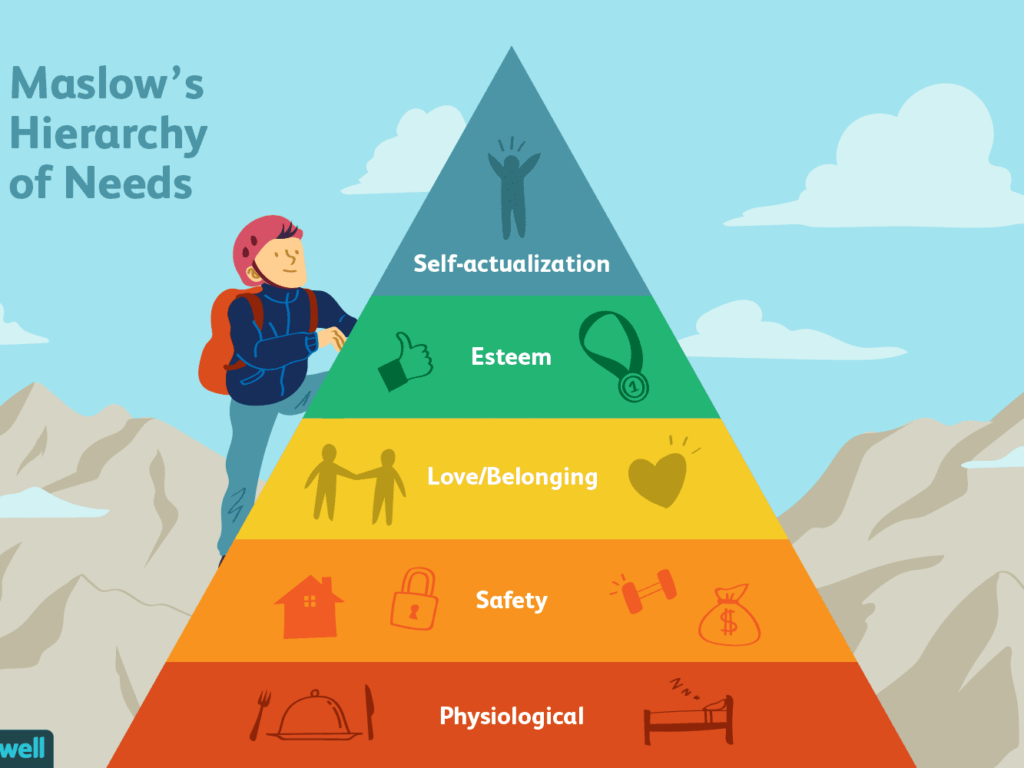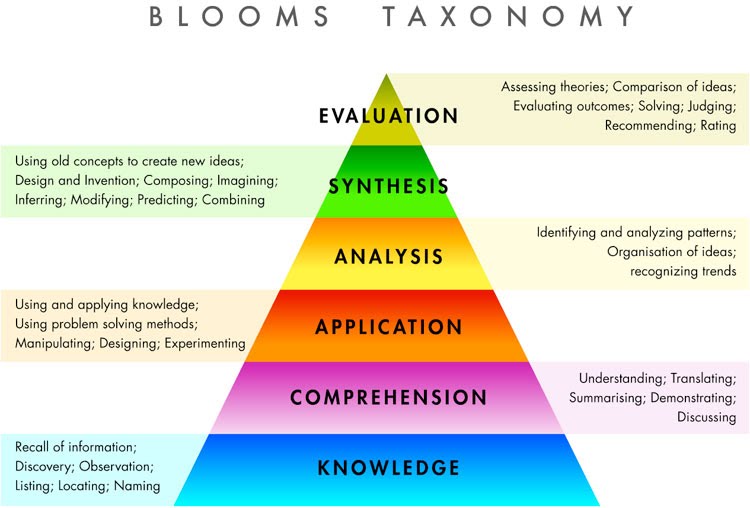Educators understand and apply knowledge of student growth and development.
As an educator, I first acknowledge that, in order for a student to grow and develop (physically, mentally, socially, and academically), certain basic human needs must be met. I constantly reference Maslow’s Hierarchy of Needs and truly believe that each student’s physiological needs, as well as their need for safety, love and belonging, and esteem must be fostered in order for them to reach any form of self-actualization. I use this framework as a guide and it helps me understand my students and what they need (individually) in order to grow, develop, and ultimatley be successful in the classroom.

I also acknowledge that student learning and understanding comes in many forms, growing and evolving from basic knowledge and comprehension to skilled synthesis and evaluation. I use Bloom’s Taxonomy of learning to help understand and frame the goals of specific learning tasks, and then evaluate students based on whether or not they have reached said goals. Knowing where students are meeting/not meeting in the taxonomy helps me understand their strengths and stretches and how best to support them in each area!

In designing, facilitating, and adjusting my lessons, I focus on how I can meet the needs of ALL my diverse learners—those struggling (my developing and emerging learners), those “right on track” (my proficient learners), and those already masters (my extending learners). The pressing questions at the back of my mind—before, during, and after lessons—are: (1) how do I ensure that all my student “get it”? and (2) if they do not get it right away, how do I ensure that those not “getting it” receive the time and support they need to “get it” without slowing the pace of instruction to a rate where the proficient and extending learners become bored and disengaged?!?
The best course of action I have found is to provide as explicit instruction as possible at the outset, approaching the content as though students have never heard of it before. I ensure to break concepts down to their most basic parts and then work toward putting them back together. I ensure that instruction is engaging to all. I invoke students’ prior knowledge and connect it to new content. I ensure that my lessons are universally designed with all learners in mind and involve oral, visual, and written components. I draw upon technology (using the Smart Board to display visuals and audio-visuals) and give students a level of choice when it comes to how they want to work and complete tasks (individually, in pairs, in small groups, or as a class). In most activities—whether during brainstorming and discussion tasks, reading comprehension tasks, written tasks, or numeracy tasks—I provide a reasonable level of choice.
If a student (or students) struggle, I make sure to take a step back and re-teach and/or review before moving on. I offer levelled work and provide students with “good fit” options that are challenging but not too difficult or frustrating. I take cues from my students and adjust instruction, lessons, and tasks accordingly. I practice, foster, and hone instructional agility—the “iterative process of understanding what you want students to learn, recognizing and interpreting student words and action, and responding in ways that build on students’ strengths, clear up misconceptions, and promote the next steps in their learning” (Erkens et. al., 2017, pg. 110).
